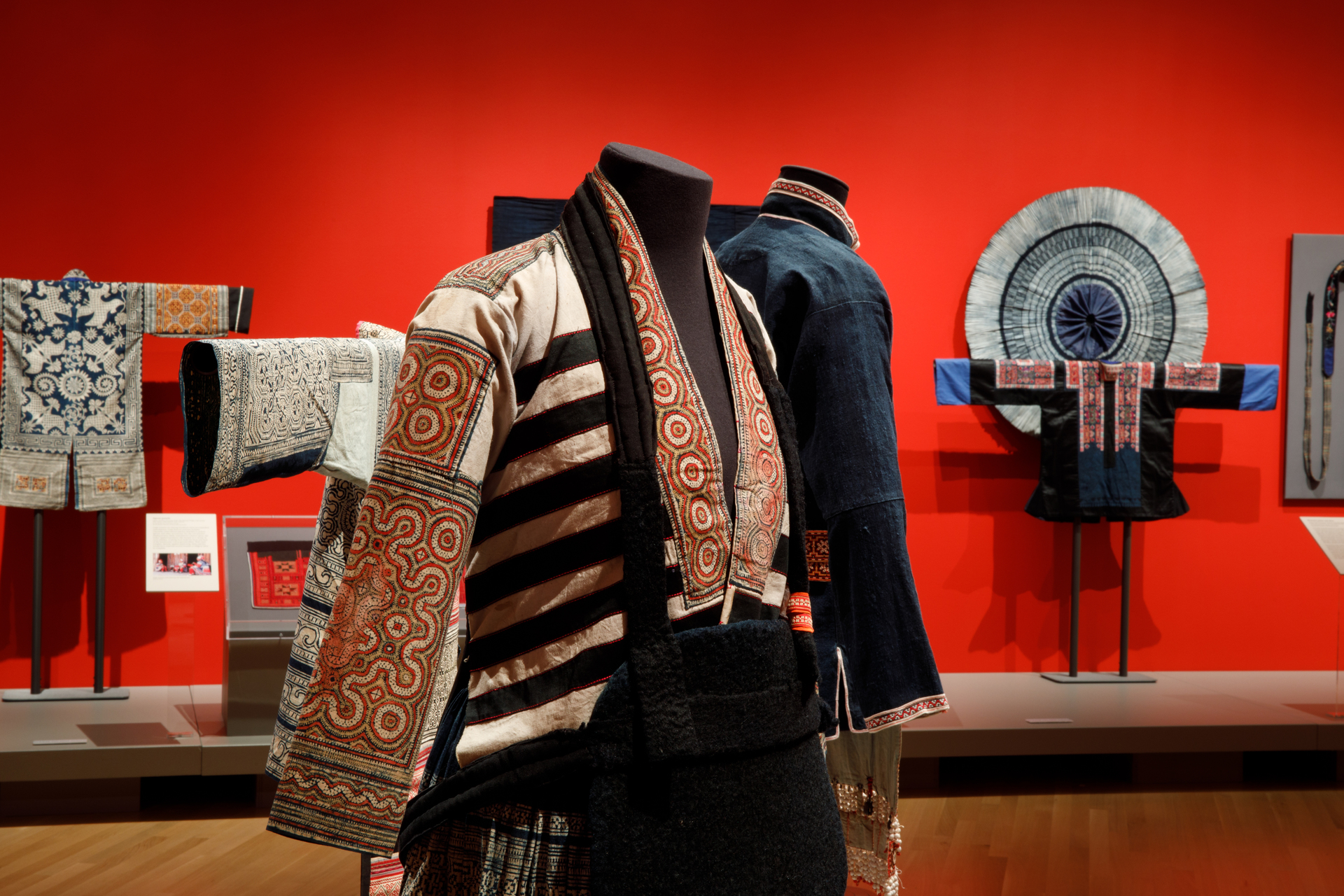Until just a few decades ago, a teenage girl from the Miao culture in the Guizhou Province of China would have spent months, maybe even years, creating a single garment: her festival jacket. Embroidered with patterns and figures from Miao history and myth, the jacket would be worn to regional ceremonial gatherings to display her skill and workmanship. Ideally, it would attract eligible young men from other villages—and eventually she would wear the same jacket at her wedding.
With the rise of machine production around the world, such handicrafts are rapidly disappearing. But visitors to the George Washington Museum and The Textile Museum can see such jackets, alongside other textiles and jewelry worn by minority cultures for community celebrations at “Vanishing Traditions: Textiles and Treasures from Southwest China.”
The pieces in the exhibition, mostly dating from the early to mid-20th century, are from a recent gift to the museum from collector Bea Roberts and include pieces from the Miao, Dong, Shui, Yao, Bouyei and other minority peoples. The techniques showcased include not just embroidery but also dyeing and metalwork.
Some of the festival jackets on display are embroidered with figures of dragons, tigers and butterflies, drawing from the figurative art of China’s majority Han culture. Others have more traditional abstract geometric patterning. Some are part of elaborately layered costumes, often including pleated skirts, which would show both that the maker was skilled and that her family was wealthy enough to afford extra cloth. One case contains whimsical hats, some topped with pom-poms and figures intended to protect children from evil spirits.
Curator Lee Talbot said some of his favorite pieces are the baby carriers, intricately patterned squares of cloth with straps that wrapped around a mother’s shoulders and torso. He pointed out one indigo carrier with a complex, almost fractal design of white thread. The maker, he said, would have essentially made the pattern blind—stitching it from the back of the piece, counting warps and wefts to make sure it came out right.
Work at that level of intricacy would strain the artist’s eyes, Mr. Talbot said. So while a housewife would still be expected to produce textiles for her family as she grew older, very few would be able to create pieces as elaborate as those they made in their teens.
Today, a Miao girl might still dress up to attend the festivals that bring neighboring villages together. But it is unlikely she would wear a handmade jacket. As women in isolated cultures gain increasing access to educational and career opportunities, they no longer have time to produce such pieces and are less likely to be forced by cultural pressures to do so. “Vanishing Traditions” captures a moment in amber—a look at an art form on its way to extinction.


